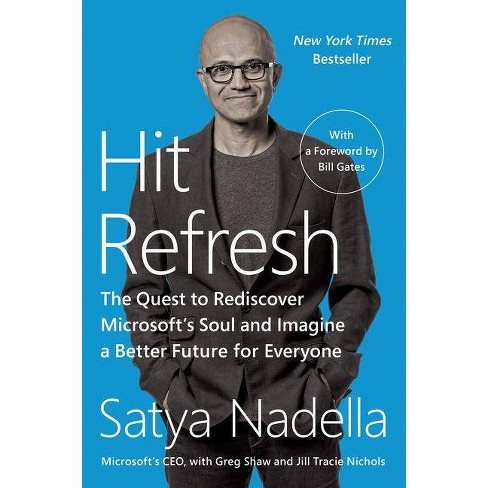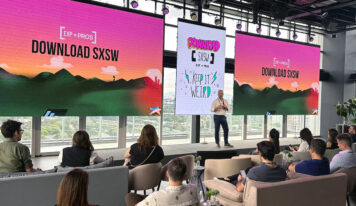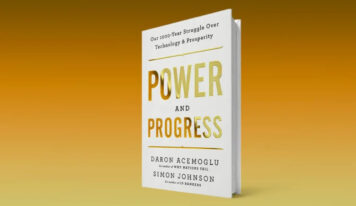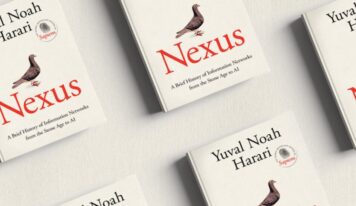Central Ideas:
1 – Microsoft has moved beyond products that have made it one of the most valuable companies to find opportunities in the cloud computing platform, Azure, and in cloud services such as 0365, the online version of the productivity suite, and Office.
2 – Microsoft’s soul drives the company to empower people. Not just individual people, but also the institutions they create, such as schools, hospitals, public agencies, and non-profit organizations.
3 – The company seeks to find clever ways to partner so that its products can be made available on others popular platforms, such as the Bing search engine on Amazon Fire tablets.
4 – Microsoft is investing to lead three important technologies that will define its own sector and others in the future: mixed reality, artificial intelligence, and quantum computing.
5 – Education and innovation, applied throughout the economy and especially in sectors, where the country or region has a competitive advantage, and multiplied by intensive use of technology, achieve over time economic growth and productivity.
About the author:
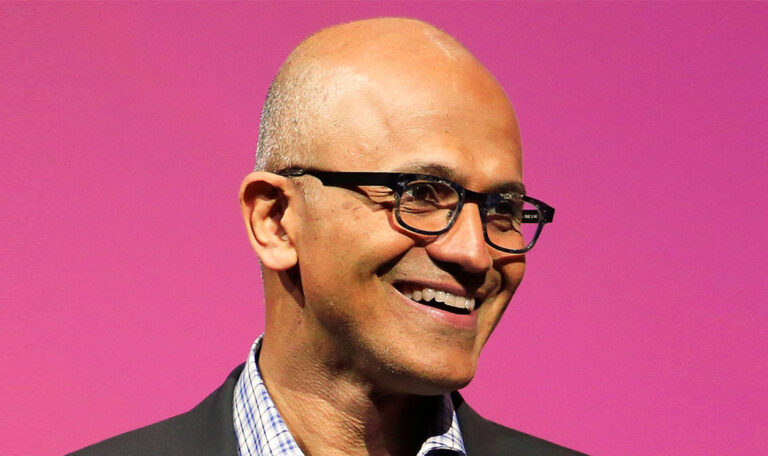
Satya Nadella is CEO of Microsoft, the third over 40 years of the company. He joined Microsoft in 1992. He is a humanist and a technology enthusiast. Nadella believes that his and his company’s mission is to empower people and organizations for a better planet.
Co-authors:
Greg Shaw is a coauthor and senior director at Microsoft. He advises Bill Gates on his philanthropic foundation.
Jill Tracie Nichols is co-author and CEO of Tracie Group.
Foreword
Bill Gates, founder and first CEO of Microsoft, made appreciations about this book, some of which we reproduce below:
“I was not surprised when, as soon as he took over as CEO, Satya already began to make his mark on the company. As the title of this book suggests, he didn’t totally get rid of the past. When you press the F5 button on your computer, part of the page is still changed. But under Satya’s leadership, Microsoft has managed to move away from a Windows-centric approach. He has led the adoption of a bold new mission for the company. Satya promotes a constant dialogue with customers, researchers, and executives. Most importantly, he is making big bets on some important technologies, such as artificial intelligence and cloud computing, in which Microsoft will differentiate itself.”
“Satya has laid out a plan so that humanity can benefit to the fullest from the opportunities created by technology without turning a blind eye to the most complex and difficult issues. And he offers us a fascinating personal story, punctuated with more literary quotes than you might expect in this kind of book, and even some lessons learned playing cricket.”
From India to America
Says Nadella: This book is about transformation, a transformation that is unfolding within me and within our company, driven by empathy and a desire to empower people. But even more importantly, it is a transformation that will occur in everyone’s lives as we experience the wave of the most transformative technology in human history, a wave that will include artificial intelligence, mixed reality, and quantum computing.
We are about to see how people, organizations, and societies can and must transform (or in other words, press F5 or “upgrade”) in their constant search for new energy, new ideas, relevance, and renewal. And we will see how empathy will become increasingly valuable in a world that will be destabilized as never before by the technological torrent that will soon sweep the planet.
The Austrian mystic poet Rainer Maria Rilke wrote that the “future comes into us, to be transformed within us, long before it comes to pass. Like an elegant computer code for machines, existential poetry has the power to enlighten and instruct us.
Let us follow in the author’s words the description of the parts that make up the book: “In the following pages, you will follow three distinct stories. First, by way of prologue, I will tell the story of my own transformation from India to my new home in the United States, with stops inland, in Silicon Valley, and at Microsoft, then on its way to its peak.
The second part talks about how I pressed the F5 button at Microsoft, as the unlikely CEO who was named successor to Bill Gates and Steve Ballmer. Microsoft’s transformation under my leadership is not yet complete, but I can say that I am very proud of our progress.
For Nadella, cricket is an obsession. “No matter where I am, that beautiful game is always on my mind. Both baseball and cricket are infinitely complex sports, but suffice it to say that the team that gets the most runs wins the game. Don’t expect me to be able to avoid analogies between cricket and business in this book.

As one can imagine, there are countless lessons and principles we can learn from cricket, but the main one is that of leadership. Says Nadella: “Looking back now, I remember one match, in which the opponents were having a blast with my balls.
In fact, the only effect of my balls was the joy of the opponents. That’s when the team captain showed true leadership. When my round came to an end (i.e. after I had bowled all six balls), he stepped into my place, even though he was better at batting than he was at bowling. Quickly, he struck out the wicket and the batsman was out.
In view of his initial success, he might well have stayed in position. But he immediately gave the ball back to me and I struck out no less than seven wickets. Why did he do this? I assumed the idea was to help me regain my confidence. We were at the beginning of the season and he needed me to play well all year. He was a very empathetic leader and he knew that for me it would be difficult to regain the lost confidence.
“That is the essence of good leadership. The good leader is the one who knows how to bring out the best in each team member.”
The one leading the cloud computing revolution was Amazon. And Jeff Bezos, Amazon’s CEO, said in his annual letter to shareholders in April 2011: “The data management breakthroughs developed by Amazon engineers were the starting point for the architectures that underpin the cloud storage and data management services offered by Amazon Web Services (AWS).
Everyone knew that Microsoft had missed the train of the mobile device revolution, and we were determined not to let the cloud revolution pass us by. I would miss, Nardella says, working with my colleagues at Bing, but I was excited to lead what I believed would be Microsoft’s biggest transformation in this generation: our journey to the cloud.
I had spent three years, from 2008 to 2011, learning about the cloud (testing its infrastructure, operations, and economics), but as a user, not a cloud company. This experience would enable me to go all-in on my new role.
Leadership means making decisions and getting the team excited about executing them. One lesson I learned from my father’s experience as a senior Indian government official was that few tasks are more difficult than building an enduring institution. The choice to lead by consensus rather than by decree is a false choice. Every institution results from a clear vision and a culture that strives to stimulate progress both top-down and bottom-up.
Today, Microsoft is on its way to having its own cloud business, worth around $20 billion. It has gone beyond the product bundles that have made Microsoft one of the world’s most valuable companies to find even more exciting opportunities in the cloud computing platform, Azure, and in cloud services such as O365, the online version of the hugely popular productivity suite, Office.
Microsoft is investing to improve these new products, strengthening its competence as service provider, embracing Linux and other open-source initiatives, while maintaining its focus on customers.
A new mission and momentum

Our author and CEO says that together, Bill Gates and Steve Ballmer forged one of the most iconic partnerships in history that would make Microsoft the most valuable company on the planet. Not only did they create spectacular products, they educated hundreds of executives who now lead multinational companies around the world, Nadella included.
They have given the new CEO increasing responsibilities over the years and taught him that the company’s software has the power to transform not only the lives of computer fanatics, but entire societies and economies.
Despite being a consummate insider, Nadella confesses, I was being told to press F5 and load a new page, the next page of Microsoft history. And that’s why, in my memo to the Board, I advocated a “Microsoft renewal.” More widespread computing would need to be promoted, as well as environmental intelligence.
“In other words, humans will interact with experiences that will come to include a profusion of devices and senses.”
All of these experiences will be enabled by intelligence in the cloud and also where data is generated and where interactions with people occur. However, I also wrote that this renewal would only be possible if we prioritize the culture of the organization and regain trust both inside and outside the company.
Microsoft needed, at last, to regain its soul. Come to think of it, asks Nadella, what would a company’s soul be? I don’t mean soul in the religious sense, but what is most natural to us. Our inner voice. What motivates us and shows us where to apply our talents. That special sensitivity that only we have.
The soul of Microsoft drives the company to empower people. Not only people individually but also the institutions they create, institutions such as schools, hospitals, companies, public agencies, and non-profit organizations.
In this sense, we must reinvent productivity and business processes. We need to go beyond just creating individual productivity tools and evolve to create an intelligent computing platform based on four principles: collaboration, mobility, a good sense of information, and trust. Nadella puts empathy as a lever in his new endeavor: “I embarked on this journey to develop more empathy. And my life today makes more sense by virtue of this new ability to take new ideas and take my empathy for people.
Cultural renaissance
Our culture up until then, Nadella says, had been pretty inflexible. Every employee needed to prove to everyone that they knew everything and were the smartest people in the room. The most important thing was to deliver work on time and meet quantitative targets. Meetings were formal. Hierarchy dominated the organization, and spontaneity and creativity were being stifled.
The cultural change I envisioned had its roots in Microsoft at the time I had joined the company. The vision of the new CEO, Nadella, revolved around exercising the growth mindset every day in three distinct ways:
For starters, we needed to be obsessed with our customers. We had to put at the center of everything the curiosity and desire to satisfy customers’ unverbalized and unmet needs by offering them great technology. We used a beginner’s mind to get to know our customers and their businesses and to present them with solutions designed to satisfy their needs.
We must be insatiable in our desire to go out into the world to learn and bring that learning to Microsoft as we innovate to surprise and delight our users.
Second, we reach our full potential when we actively pursue diversity and inclusion. If we want to help the planet, we need to reflect the planet. Our workforce must continue to become more and more diverse, and we need to include a wide range of opinions and viewpoints in our thinking and in our decision-making processes. In every meeting, don’t just talk. Give others room to put forward their ideas.
Finally, we are part of one company, one Microsoft, not a confederation of fiefdoms.
Innovation and competition do not respect our silos, our organizational boundaries, so we must learn to overcome these barriers.
We are a family of people united by a single common mission. We actively seek opportunities to change our practices and our behaviors in order to realize and clarify the growth mindset.

Friends or enemies?
In the words of Microsoft’s CEO: “One of my priorities is to ensure that our customers, who number over 1 billion users, no matter which cell phone or platform they choose to use, have their needs met so that we can continue to grow.
To achieve this goal, we sometimes have to make peace with old rivals, seek new and surprising partnerships, and resume long-standing relationships. Over the years, we have matured to the point where we have become obsessed with customer needs, and have learned to coexist and compete at the same time.”
Collaborations between Microsoft and Apple, between Microsoft and Linux, and others work to the advantage of all parties involved. Partnerships like these can be entered into, sometimes reluctantly, with competitors in specific product or service categories.
We compete vigorously with Amazon in the cloud market, and no one doubts that. But what is stopping Microsoft and Amazon from joining forces in other areas? For example, Bing is the search engine for Amazon Fire tablets.
“We need to find smart ways to enter into partnerships so that our products can be made available on other people’s popular platforms.”
“Our emphasis on strategic partnerships is not new,” says Nadella. In fact, it is but another example of how we are rediscovering the soul of Microsoft. Thinking back to our founders, we realize that Paul Allen saw clearly the power of new computers and Bill Gates saw the power of software. Together they were able to do wonders and, even more importantly, democratize computing. Sometimes I ask myself: if Bill and Paul had not succeeded with Microsoft, what would the world be like today?
When I became CEO, I realized that we had forgotten that our talent for forming partnerships was vital to our success. This is the kind of thing that can happen to any great company. Success can cause people to unlearn the habits that made them successful in the first place. We knew that we needed to relearn how to partner. We needed to look at our industry with fresh eyes and find ways to add value for our customers, regardless of whether they use an Apple device, a Linux platform, or an Adobe product.
Conclusion: “We learned a lot from these experiences [Samsung, Yahoo and others], which helped us renew our spirit of partnership. Microsoft already has the largest partner ecosystem in the world. Hundreds of thousands of companies around the world create and sell solutions for our products and services. In addition, millions of customers in all industries build their businesses and organizations using Microsoft technologies. My primary goal is to be the leading platform provider to support all of this entrepreneurial energy, with a relentless focus on creating economic opportunities for our customers.
Beyond the cloud

Nadella describes the list of achievements already made and the more to come: “We have gone beyond PCs and servers to pursue success in the cloud. And we also need to go beyond the cloud. Technology trends can be misleading. They say we tend to overestimate what we can accomplish in the short term and underestimate what we can accomplish in the long term.
However, we are investing to lead three important technologies that will define our industry and other industries in the future: mixed reality, artificial intelligence, and quantum computing.
These technologies will inevitably lead to gigantic changes in our economy and society. In the last three chapters of this book, I will address the values, ethical issues, policies, and economic factors that we need to take into account to prepare for this next wave.”
To avoid getting stuck in the innovator’s dilemma (and to avoid spending all the energy putting out today’s fires and get back to thinking about tomorrow as well), Microsoft has decided to revise its investment strategy by considering three growth fronts: first, working on growing the core businesses; second, incubating new ideas and products for the future; and third, investing in revolutionary breakthroughs in the long term.
On the third front specifically, Microsoft is already focusing on areas that only a few years ago seemed far away, but which today occupy the frontiers of innovation: mixed reality, artificial intelligence, and quantum computing. Mixed reality will be an essential tool in medicine, education, and manufacturing processes.
Artificial intelligence will help predict crises, such as the zika epidemic, and help us focus our time and attention on what matters most.
Quantum computing will give us the computing power needed to cure cancer and solve the problem of global warming once and for all. HoloLens [virtual reality device], on the other hand, gives access to a mixed reality in which users can navigate both in their current location and in a remote environment. “When I had the chance to see what HoloLens was capable of, I had no doubts,” Nadella says.
“While HoloLens has clear applications in video games, I soon understood the technology’s potential in classrooms, hospitals, and, yes, even space exploration. In fact, NASA was one of the first organizations to realize the value of HoloLens, using an early version of the technology so astronauts on Earth could collaborate with astronauts in space.”
The convergence of three revolutionary advances (big data, enormous computing power, and sophisticated algorithms) is accelerating the transformation of artificial intelligence from mere science fiction to reality.
At ever-increasing speeds, data is collected and made available thanks to the exponential increase in the number of cameras and sensors in our daily lives.
Artificial intelligence needs data to learn. The cloud has made enormous computing power available to everyone, and complex algorithms can now be written to explore mountains of data for insights and information.
Quantum computing is not easy to define. Born in the 1980s, it leverages certain quantum physical properties of atoms or nuclei that enable them to work together as quantum bits, or qubits, to act as the processor and memory of a computer. By interacting with each other in isolation from our environment, qubits are able to perform certain calculations much faster than traditional computers.
The institutions that are competing to mobilize quantum computing are Microsoft, Intel, Google, and IBM, as well as startups like D-Wave and even governments that have huge amounts of money for national defense.
Microsoft concentrates its quantum computing research at Q Station at the University of California, Santa Barbara, and was conceived by Michael Friedman, awarded the Fields Medal for best mathematician in the world in 1986. Q Station has developed topological quantum computing, which reduces the overhead of quantum resources compared to other approaches and is therefore more impervious to noise.
The trust equation
The world needs a kind of Digital Geneva Convention, a broader multilateral agreement, instating cybersecurity norms as global rules. Just as the governments of the world came together in 1949 to adopt the Fourth Geneva Convention to protect civilians in times of war, with this digital agreement governments would commit to adopt standards developed to protect civilians on the Internet in times of peace.
Such a convention could lead to governments committing to prevent cyber attacks against the private sector or crucial infrastructure, or intrusions to steal intellectual property. And it should require governments to support the private sector in detecting, containing, responding to, and recovering from such incidents, and mandate that governments report vulnerabilities to vendors, rather than store, sell, or exploit vulnerabilities.
Snowden’s revelations, according to Nadella, prompted the press to do some heavy marking on our campus and throughout Silicon Valley. It was critical to get the story straight for other customers and the partners who trusted us with their data. We needed to act (in court and elsewhere) to defend our values as leaders in the information economy. And that is what we sought to do. Brad Smith led the initiative, working closely with our entire senior leadership team.
Expanding the action further, Microsoft partnered with AOL, Apple, Facebook, Google, LinkedIn, Twitter, and Yahoo to form an alliance called Reform Government Surveillance. The alliance members insisted on restricting the authority of the United States and other governments to collect user information. They called for more oversight and accountability, advocated for transparency of government data requirements, and stressed the need for governments to respect the free flow of information.

The future of people and machines
In the future, artificial intelligence will be the most frequent and necessary companion, helping to care for people, diagnose diseases, teach, and give advice.
Artificial intelligence will be a failure if it cannot incorporate emotional intelligence.
Artificial intelligence has proven its strength, which after all must be directed well for the benefit of people. In 1996, when IBM’s Deep Blue demonstrated that a computer could beat a good human player in a game of chess, the news was splashed in headlines around the world.
The following year, Deep Blue took a giant step forward and defeated the legendary Russian chess player Garry Kasparov in a full six-game challenge. In 2011, IBM’s Watson had already defeated two masters of the quiz show Jeopardy! These achievements reflect enormous achievements in science and engineering, but the future is much more promising than computers beating people at games.
In the future, people and machines will work together, not in opposition.
Imagine the possibilities when people and machines work together to solve humanity’s biggest problems, such as disease, ignorance, and poverty.
Steps are already being taken. In 2016, with little fanfare, Microsoft, Amazon, Google, Facebook, and IBM announced a partnership, dubbed the “Partnership on AI,” to develop artificial intelligence designed to benefit people and society in general.
The idea is to raise awareness of the possibilities to meet the challenges of benefiting from opportunities in the field. The person vs. machine research covers automobiles and medicine, collaboration between humans and machines, job displacement, and other challenges.
In terms of software development, artificial intelligence is becoming a third execution system, the next system on which programmers will build and run applications. The PC was the first execution system, for which Microsoft developed applications such as the Office suite of tools (Word, Excel, PowerPoint, and others).
Today, the Internet presents the second execution system. In the world of artificial intelligence and robotics, productivity and communication tools will be created for a completely new third platform that not only manages information, but is able to learn from that information and interact with the physical world.
Reclaiming economic growth for all
Says Nadella; “As a business leader and the son of an economist, I can say that I can’t help but be obsessed with these questions. Is the economy growing? No. Is the world becoming more just and equal? No. Do we need new technological advances to make this happen? No. Will new technology force some people to change jobs? Yes. And how can we promote inclusive growth? Finding the answer to that last question is perhaps the most pressing challenge today.”
Leaving aside this crude metric called GDP, there is a moral obligation to keep innovating, to create technologies to solve big problems, to promote the good of the planet, in addition to fostering economic growth.
And how can we mobilize technology to solve society’s biggest problems, among them climate change, cancer, and the challenge of enabling people to have meaningful, productive employment that can replace the jobs eliminated by automation?
In his search for an answer, Nadella invited Diego Comin, an economist from Dartmouth. Professor Comin has studied in depth the evolution of technological diffusion over the past two centuries in countries around the world. Comin and economist Bart Hobijn collected a dataset for the study Cross-country Historical Adoption of Technology, which analyzes the time it took 161 countries to adopt 104 technologies. According to these authors, countries tend to adopt a new technology about 45 years after it is invented.
Based on this analysis, Comin agrees that the differences between rich and poor nations can largely be explained by how quickly they adopted different industrial technologies. But, according to him, it is also important to take into account the intensity with which nations apply new technologies.
Even when countries are slow to adopt new technologies, it is the intensity of technology use (not just access to it) that creates economic opportunities. Are the technologies idle, just waiting to be applied, or has the labor force been trained to extract the most from its productivity? A trained workforce leads to the intensity of the application of technologies: “The question is not only when these technologies arrive, but also the intensity of their use,” Comin concludes.
All regions, both in developed and developing countries, must apply the new technologies to gain economic advantages. This is what China has done with a proactive industrial policy aimed at stimulating entrepreneurship and savings in manufacturing and consumer Internet services.
China has strategically used the global supply chain and its own domestic market to extend its comparative advantage and finance its economic growth. India has already begun to do this with the creation of the new digital ecosystem known as IndiaStack. India, once an infrastructure-poor country, is making great strides and positioning itself as a leader in digital technology.
Education and innovation, applied throughout the economy and especially in sectors, in which the country or region has a comparative advantage, and multiplied by intensive use of technology, achieve, over time, economic growth and productivity.
FACTSHEET:

Title: Hit Refresh
Author: Satya Nadella with Greg Shaw and Jill Tracie Nichols
Review: Rogério H. Jönck
Images: Unsplash
![[Experience Club] US [Experience Club] US](https://experienceclubus.com/wp-content/uploads/2021/03/laksdh.png)





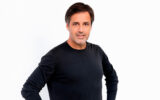



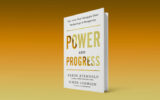
![[Experience Club] US [Experience Club] US](https://experienceclubus.com/wp-content/uploads/2021/03/logos_EXP_US-3.png)


